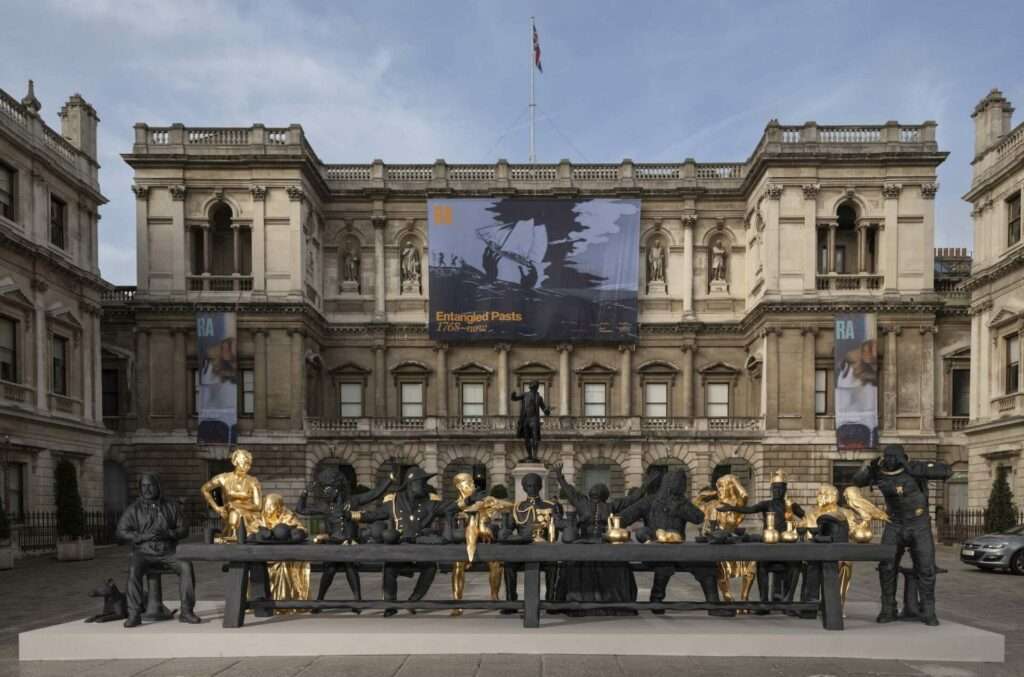If you go to see the exhibition Tangled pasts, from 1768 to the present. Art, Colonialism and Change at London’s Royal Academy of Arts, a stone’s throw from Piccadilly Circus, until April 28, you won’t want to miss artist Tavares Strachan‘s life-size sculpture, impressively enthroned in the building’s central outdoor courtyard.
The First Supper (Galaxy Black, 2023) is a monumental installation measuring over 9m long and 2.5m wide, made of bronze covered in black patina and gold leaf, referring to the European attraction to West Africa’s “Gold Coast” in the 15th century. The long table set for the meal, deliberately composed of African dishes, is of course reminiscent of The Last Supper – Leonardo da Vinci’s iconic mural – but instead of biblical figures, notables from various fields, scientists, activists, artists, literary figures and other black personalities form a symbolic gathering of brilliant minds throughout history, emphasizing the contributions of individuals from diverse backgrounds to the knowledge and progress of humanity.
The thirteen guests include abolitionist Harriet Tubman (1822-1913), activists Marcus Garvey (1887-1940) and Marsha P. Johnson, politician Shirley Chisholm (1924-2005), nurse Mary Seacole (1805-1881) and singer-songwriter Sister Rosetta Tharpe (1915-1973), warlord Zumbi dos Palmares (1655-1695), explorer Matthew Henson (1866-1955), trans woman and LGBT activist Marsha P. Johnson (1945-1992), sound engineer King Tubby (1941-1989), poet and playwright Derek Walcott (1930-2017), airplane pilot Robert Henry Lawrence (1935-1967), former Ethiopian emperor Haile Selassie (1892-1975) as Jesus, and finally Tavares Strachan (1979-) himself as Judas Iscariot.
The Bahamian-born conceptual artist is renowned for his contemporary multimedia installations exploring science, technology, mythology and history. The First Supper has already been exhibited in various art institutions and events around the world, sparking conversations about the intersections of art, science, history and culture. It is a reminder of the power of creativity and intellectual curiosity to transcend boundaries and inspire progress.
Text by Christine Cibert.



